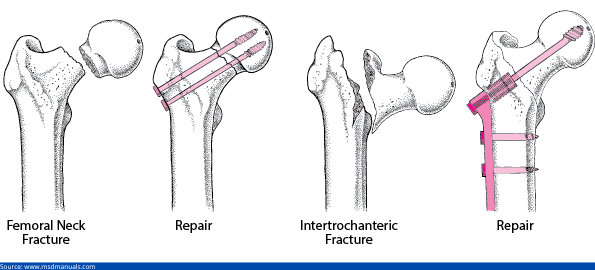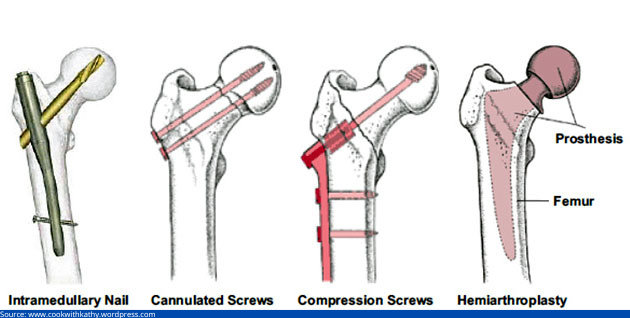Hip Fracture – Causes, Treatment, And Recovery Process

Hip pain is a common problem that can be caused by a variety of conditions. It can range from a mild ache to sharp, throbbing pain. Hip pain can be caused by arthritis, bursitis, tendinitis, or a stress fracture. Treatment depends on the underlying cause of the pain.
Dr. Dilip Mehta, often regarded as the best orthopedic doctor in Jaipur, explains that a hip fracture is a break in the upper part of the femur (thighbone). It is a severe injury that usually requires hospitalization and surgery.
Hip fractures most often occur in people over the age of 60. The most common cause of a hip fracture is a fall. Other causes include car accidents and bone diseases such as osteoporosis.
The healing process following a hip fracture surgery is a big concern for the patient, as well as for the patient's family.
Read on to learn about hip fractures, hip fracture surgery, and the recovery process.
What are the different types of hip fractures?
The most common types of hip fractures include:

Femoral neck fractures
These fractures occur near the ball-and-socket joint of the hip and are the most common type of hip fracture. It is a type of intracapsular hip fracture.
Intertrochanteric fractures
A common type of extracapsular fracture, they occur in the bone between the ball-and-socket joint and the knee.
Subtrochanteric fractures
A clinically uncommon fracture with the original fracture line less than 5 cm below the lower trochanter is known as a subtrochanteric femur fracture. These fractures occur in the bone below the ball-and-socket joint.
If you or a loved one had a fall and suspect it may have caused a fracture, please speak with Dr. Dilip Mehta, an experienced orthopedic doctor in Jaipur, for treatment options.
What are the causes and risk factors of hip fractures?
People of any age can get hip fractures as a result of the following causes:
- A severe vehicle accident
- A heavy sports trauma injury
- A fall from a standing height, the most common cause of a hip fracture in older persons
- A sudden twist while standing can cause a hip fracture in people with fragile bones
The risk factors include:
- Age and gender
- Certain medical conditions such as rheumatoid arthritis, osteoporosis, and thyroid problems which weaken the bones
- Certain medications like prednisone can weaken your bones
- Lack of vitamin D and calcium
- Lack of regular exercise
- Excessive use of alcohol and tobacco
What are the symptoms of a hip fracture?
The symptoms include:
- Severe pain in the groin or hip
- Difficulty moving after fall
- Being unable to bear weight on the injured leg
- Bruising, swelling, and stiffness in and around the hip area
- Limb feels shorter on the injured side
- Fractured leg projects outward
What are the treatment options?

Different treatments are available depending on the patient's injury and the site of the broken bone. The families of patients may occasionally choose nonsurgical procedures rather than surgery.
Dr. Dilip Mehta, an accomplished hip replacement doctor in Jaipur, says that while nonsurgical therapy for hip fractures could be an option for patients who are very ill or fragile, surgery is almost always necessary for femur bone hip fractures.
Hip replacement surgery, commonly referred to as total hip arthroplasty, is a procedure to replace a worn-out or injured hip joint.
Hip fracture surgery usually involves replacing the broken bone with a metal rod or artificial joint. The surgery is generally successful in relieving pain and restoring mobility. However, it is a major surgery with complications such as infection risks.
What is the recovery process after hip replacement surgery?

The recovery process involves the following:
Mobility: All joints must move in order for them to work correctly. Joints and muscles cannot work effectively if they are not moving properly.
Strength: After fracturing one's hip, it is crucial to regain muscle strength. It is imperative to get the muscles moving as soon as possible to avoid the possibility of long-term muscle atrophy following surgery.
Balance:
The ability to balance again is crucial for both functional recovery and injury prevention. Canes and walkers are examples of ambulatory aids that can be useful.
A fractured hip can take several months to recover fully. Hip fractures often heal in 10 to 12 weeks, and it takes considerably longer to restore muscular strength and mobility. Typically, the patient can reach a near-full recovery within 6 months of the operation.
Having stated that, one should not put off participating in rehabilitation therapy for months or longer.
The probability of recovering function decreases over time, cautions Dr. Dilip Mehta, an acclaimed orthopedic surgeon in Jaipur, so the earlier you start your recovery therapy regime, the stronger your chances of recovering.
Conclusion
The hip joint is a complex structure made up of bones, muscles, tendons, and ligaments. A hip injury can be a debilitating condition that limits your ability to move and put pressure on your joints.
When the hip joint is damaged, it can cause a lot of pain and make it difficult to do everyday activities.
Timely surgery can help heal the damage and improve your quality of life. In some cases, surgery may also be able to prevent further damage to the joint.
If you have a hip injury, you must see a doctor as soon as possible. Early diagnosis and treatment can improve your chances of a successful outcome.
Please do not delay. Set an appointment with Jaipur’s top-notch hip fracture surgeon , Dr. Dilip Mehta, for safe, reliable, and world-class treatment.
